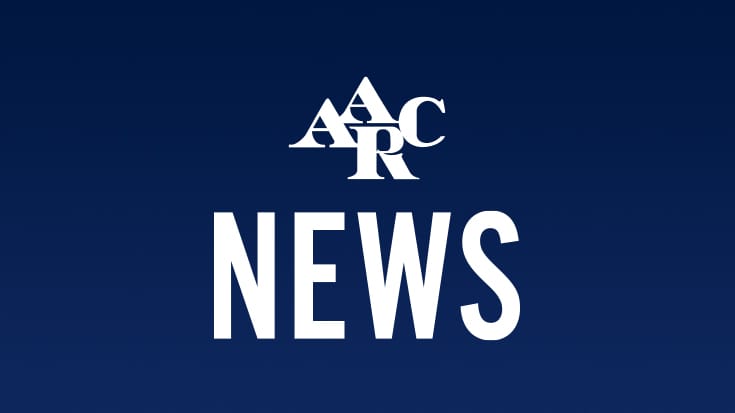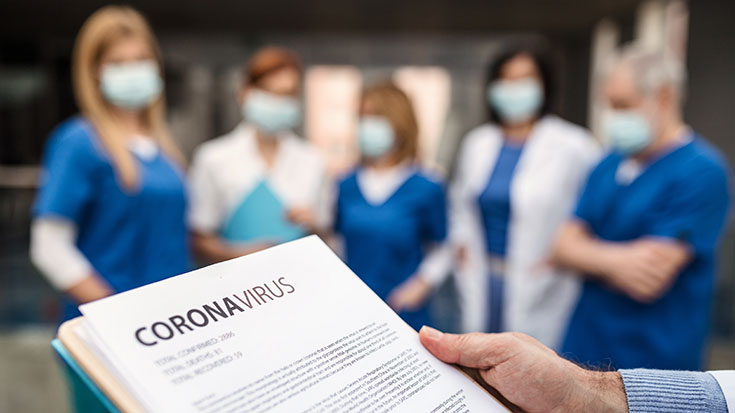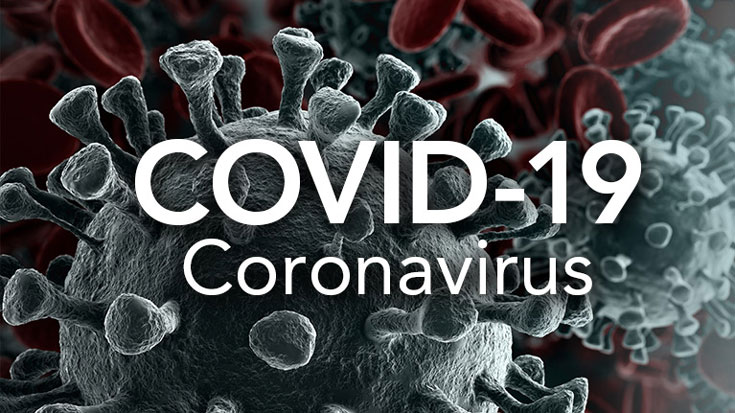
On January 9, 2020, the World Health Organization (WHO) announces coronavirus-related pneumonia infections in Wuhan, China. Six months later, cases soared to over two million in the United States .1 hospital and emergency departments were overwhelmed with COVID-19; staff were scared, overworked, and desperate for assistance. If that were not enough, supplies and equipment such as masks, filters, and ventilators depleted faster than anyone could have imagined. In addition, available viral testing kits were limited and took hours or days to confirm positive or negative infection status. These environmental factors contributed to health care providers having to work through ongoing concurrent crises while the information regarding the virus was evolving, and let us not forget, taking care of extremely sick patients all at the same time.
Specific to respiratory care, respiratory therapists found a way to adapt. RTs had to be flexible in our practices with the rapid onset of new information. With minimal time and information to implement new processes, it was a daunting task, but RTs everywhere understood the importance since many respiratory care therapies produce an aerosol. The aerosol generating procedure (AGP) can lead to many unintended exposures due to the highly transmissible factor of the virus. We had to develop appropriate mitigation strategies, provide extraordinarily complex care, and create new workflows around equipment and supplies. This pandemic was a new experience for most of RTs, even for those with many years in the practice.
Despite the influx of adult patients, pediatric in-patient and emergency volumes declined as stay-at-home mandates continued and children did not leave the house. While pediatric hospitals were not empty, providing care took many resources to perform. Stress levels of health care workers continued to be extremely high given the state of we were living, not just for a day or two but for many months. It was a time of intense reflection, attention to detail, focus on protection, and team support.
Fast forward to September 2021. According to the American Academy of Pediatrics and the Children’s Hospital Association, in the U.S., children represent about 16% of all COVID-19 cases. Moreover, COVID-19 in children has been on the rise in the U.S., with children recently making up 24% of just over 100,000 weekly reported cases of COVID-19.2 We are not out of the woods yet. We have learned many lessons from the ongoing coronavirus pandemic regarding the requirements for rapid response and the need for effective and coordinated multidisciplinary strategies to provide safe care. Now is a suitable time to gather our learnings and share our experiences.
What do RTs who work in pediatrics need to know about COVID-19?
To help answer this question, I interviewed colleagues involved with most of the COVID-19 work during the last two years. These are the lessons learned from the pandemic they wanted to share.
Communicate, communicate, communicate
One thing that became abundantly clear from the very beginning of the COVID-19 pandemic was the need for regular, almost intrusive, communication with all our employees. Not only did they need to hear about the actions the hospital and the department were taking to keep the employees safe, but they also wanted updates on the local and national case numbers and any latest information about the virus. More importantly, the need to communicate their ideas and concerns in a way that helped them feel connected to the process and actively part of the solution became abundantly clear. As a result, we developed virtual meetings to support the various teams, optimizing them on all levels. Employees joined these forums in abundance to discuss all things COVID. This practice is now embedded into our respiratory care department’s standard practice regarding information sharing because it allows everyone to be present, even if not in person. It is impossible to communicate too much, too often, or to too many people during times like this.
Optimize existing resources
Resources includes the use of people, simulation, and benchmarking with other organizations. Since each hospital has varying resources, this will look a bit different, but I feel that most have access to these three areas. First, there is often a top-down approach to redefining practice changes, even when we need to get things done quickly. We realized, early on, how important it was for the front-line staff to work alongside their leader when developing the necessary practice changes. This method produces flow-efficient care while supporting safety and quality. Being involved in the decision making for process changes helped front-line staff come to terms with all the changes that needed to happen at a moment’s notice. At the same time, it allowed the team to understand the why behind these changes, which was extremely important in a time of uncertainty.
Simulation training is an integral part of the educational platform. This fact was particularly evident during the initial stages of the pandemic. The use of simulation to practice emergency situations, complex workflows, and other non-traditional practices was monumental to our work. It was the leading platform that drove or supported practice changes. One eye-opening moment for me was the session where the team simulated the intubation of a child in the ICU (Intensive Care Unit). During COVID, the goal was to minimize the number of people in the room while performing the procedure to decrease the potential of work-related exposure. Soon after the simulation started, the team realized that even with the added use of technology, we still needed more people than initially projected to do it safely. They avoided a safety event by running that simulation. The take-home here is, if possible, using simulation, high or low fidelity, is a valuable way examine practice changes, and allow clinicians to learn new skills and procedures.
According to the ASQ, we define benchmarking as “measuring products, services, and processes against those of organizations known to be leaders in one or more aspects of their operations.”3 It provides necessary insights to understand how your organization compares with similar organizations.3 It can also help organizations identify areas, systems, or processes for improvements.3 In other words, phone a friend, do not re-invent the wheel. Two heads are better than one. Benchmarking is a great way to gain or give necessary information during times of need.
Build staff support systems
With so many evolving practices and process changes, it was essential to provide easy access to information, focusing on the what and the how with words and pictures. We made it easy for the staff to do the right practice every time without using a lot of time and effort. While policy and procedure manuals are essential for referencing care practices, they are not always an easy go-to. Giving staff the information that they need it the moment, without having to stop, go to a computer, or manual to look it up is vital.
The pandemic has taught us that empathy and transparency are keys to staff support. The stresses and concerns that came with navigating the pandemic called for something more than standard practices. Unlike Ebola training, where, at our institution, RTs could selectively participate, COVID is a respiratory disease. Everyone needed to provide care. It was not optional.
For this reason, it was crucial to lead and listen with empathy, do our best to understand how different members of our teams were coping through the chaos, and help navigate the staff’s fears. Transparency is openness to sharing information clearly, easy to understand. Staff wanted to hear what was going on explicitly, good or bad, with no holding back.
The COVID-19 pandemic highlighted the RT role as vital in the health care setting. Furthermore, the pandemic highlighted the value of communication, teamwork, partnerships, resource management, and staff support during times of uncertainty. As we now understand more about how to manage this pandemic, it is almost certain that more will follow. Taking the lessons learned during this two-year event can help make the next a bit easier. Thank you to my colleagues for your dedication, support, and perseverance; health care workers are the world’s shining stars.
References
- A Timeline of COVID-19 Developments in 2020. American Journals of Managed Care. January 1. 2021 . https://www.ajmc.com/view/a-timeline-of-covid19-developments-in-2020. Accessed November 11, 2021.
- CDC: Delta variant causing increase in pediatric COVID-19, no severity. AAP News September 3,2021. https://publications.aap.org/aapnews/news/15615. Accessed November 11,2021.
- What Is Benchmarking? American Society for Quality. https://asq.org/quality-resources/benchmarking. Accessed November 11, 2021.
Email newsroom@aarc.org with questions or comments, we’d love to hear from you.

















